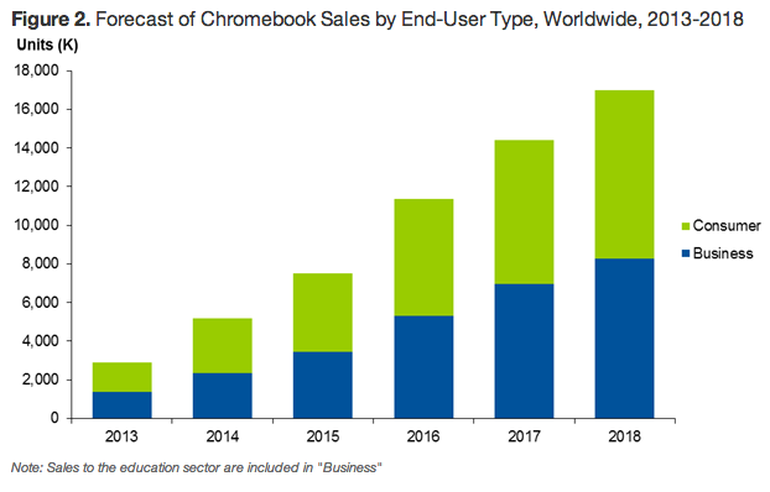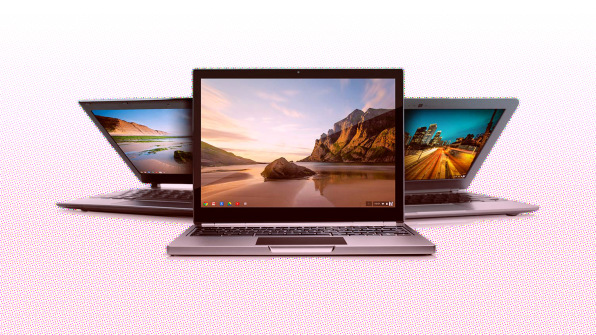The rumored Surface CloudBook running Windows 10 Cloud, which could be the most important piece of hardware to come out of Microsoft’s May 2 education-focused event, could finally break the great sales run that Chromebooks have been enjoying.
Last year was the first time Chromebooks – essentially Chrome OS devices – outsold Apple macOS devices. In confirmation to The Verge last year, IDC analyst Linn Huang said:
“Chrome OS overtook Mac OS in the US in terms of shipments for the first time in 1Q16. Chromebooks are still largely a US K-12 story.”
The last part of that statement is what’s relevant to this piece. Chromebooks are primarily used by the student community because they are more affordable than full-fledged laptops. However, they are also popular with consumers and business users.
Projections show that Chromebook sales could hit 17 million units by 2018.

If anything that put a stop to that rapid growth in Chromebook sales, it’s an inexpensive Windows laptop like the rumored Surface CloudBook running Windows 10 Cloud. How did they make it inexpensive? Simple, they stripped Windows 10 of a lot of its functionality, and now allow it to only run UWP apps from the Windows store – and they’re offering it to OEMs at a much cheaper rate that a full Windows 10 license.
Now, if you’re a heavy user, that might not appeal to you. But it will appear to students and other light users that primarily use a device for Internet connectivity. That’s exactly what Chromebooks do, which is why they boot up that fast – there’s no heavy OS dragging them down at boot.
And this is the same market that the new device from Microsoft will address – the segment that needs a cheap notebook-type laptop with all the basic word processing, spreadsheet, image preview, PowerPoint, Skype and other apps and utilities.
Microsoft, in fact, is in a much better position to provide these basic apps since they’ll run natively on the device in question and they’re already tightly integrated with Windows 10 and Microsoft Edge. Moreover, these devices can be used to sign in to Microsoft’s cloud-based productivity suite, Office 365, which is already far more popular than Google’s equivalent, G Suite. That’s a huge compatibility advantage that is often overlooked. Online data can easy be synced to offline locations because they’re essentially variants of the same applications.
If the Redmond giant does release such a device on May 2, it could be an immediate hit with the education and business communities, as well as regular consumers that need a lightweight device to carry around instead of an expensive laptop or even a premium hybrid tablet.
In another two week’s we’ll know what strategy Microsoft has up its sleeve to address this very important and growing market – educational hardware. And if it works, it could put a big dent in future Chromebook sales.
To preempt such a move from Microsoft, and for other reasons, Google has been trying to bring Android apps into Chromebooks for some time now. That could finally be happening as Chrome OS 58 releases at the end of the month. But, as we outlined in an earlier article, there will be hiccups in bringing Play Store in full to Chromebooks. Android O handles some of it, but it’s still early days. And that’s enough of a Window for Microsoft to slip in a Surface CloudBook and promote Windows 10 Cloud in big way.
Naturally, Microsoft’s devices will take time to show sales at the level that Chromebooks currently enjoy, but Surface CloudBooks may well be the only contender to topple Chromebook from its high perch in this particular market segment.
Thanks for reading our work! If you enjoyed it or found value, please share it using the social media share buttons on this page. If you have something to tell us, there’s a comments section right below, or you can contact@1redDrop.com us.
Source: VentureBeat



